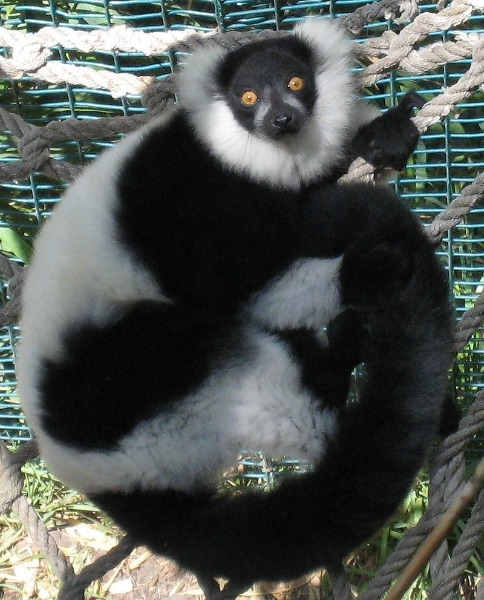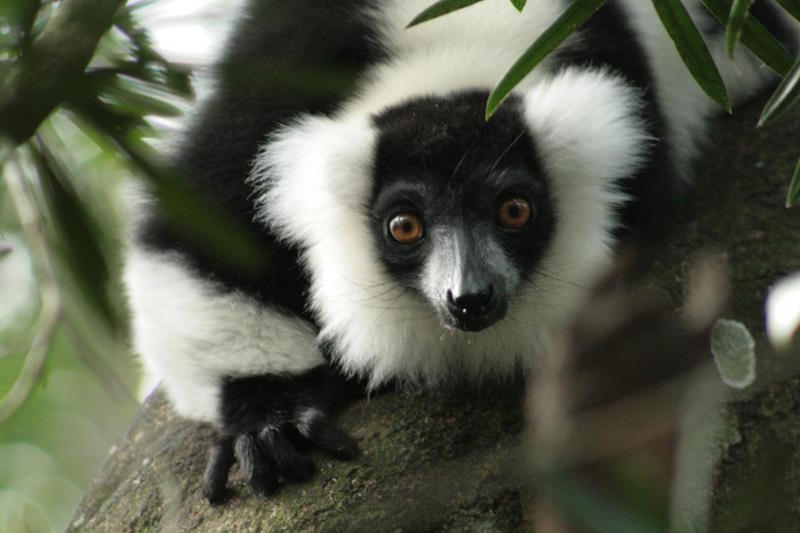Black and white ruffed lemur
Episode #2 of the course “The Most Endangered Species in the World”
The island of Madagascar is home to over 20 varieties of lemur with declining populations. Most are running out of natural habitat, and combined, there are approximately 10,000 lemurs remaining. The most easily-recognizable lemur is the critically-endangered black and white ruffed lemur. About 3.5 feet long and weighing about 7.5 pounds, the handsome long-coated ruffed lemur inhabits the trees on the island and rarely comes down to the ground. The black and white ruffed lemur is mostly black, with white patchwork on the face, back, and legs. On the northern part of Madagascar, the lemurs have a greater proportion of black fur, and on the southern part of the island they have more white fur.
It has been poached and prized for its fur, and the habitat in which it lives is being destroyed. Lemurs are active during the day and can be easily seen and heard from the ground. A very talkative primate, black and white ruffed lemur communicates through a variety of calls and clicks. Because some of them sound like screams, shrieks, and squeals, ancient Romans thought they were ghosts in the forest; the word “lemur” is Latin for “ghost.”

Black and white ruffed lemurs are strictly vegetarians, consuming mostly fruit, seeds, and nuts. They are important in redistributing plant life throughout the parts of the island they inhabit. Black and white ruffed lemurs have social structures that are run by females, and in the wild the lemurs can remain in family units for life. Conservation efforts to save endangered lemurs have been going on for a half-century, but the black and white ruffed lemur remains critically endangered.
Share with friends

